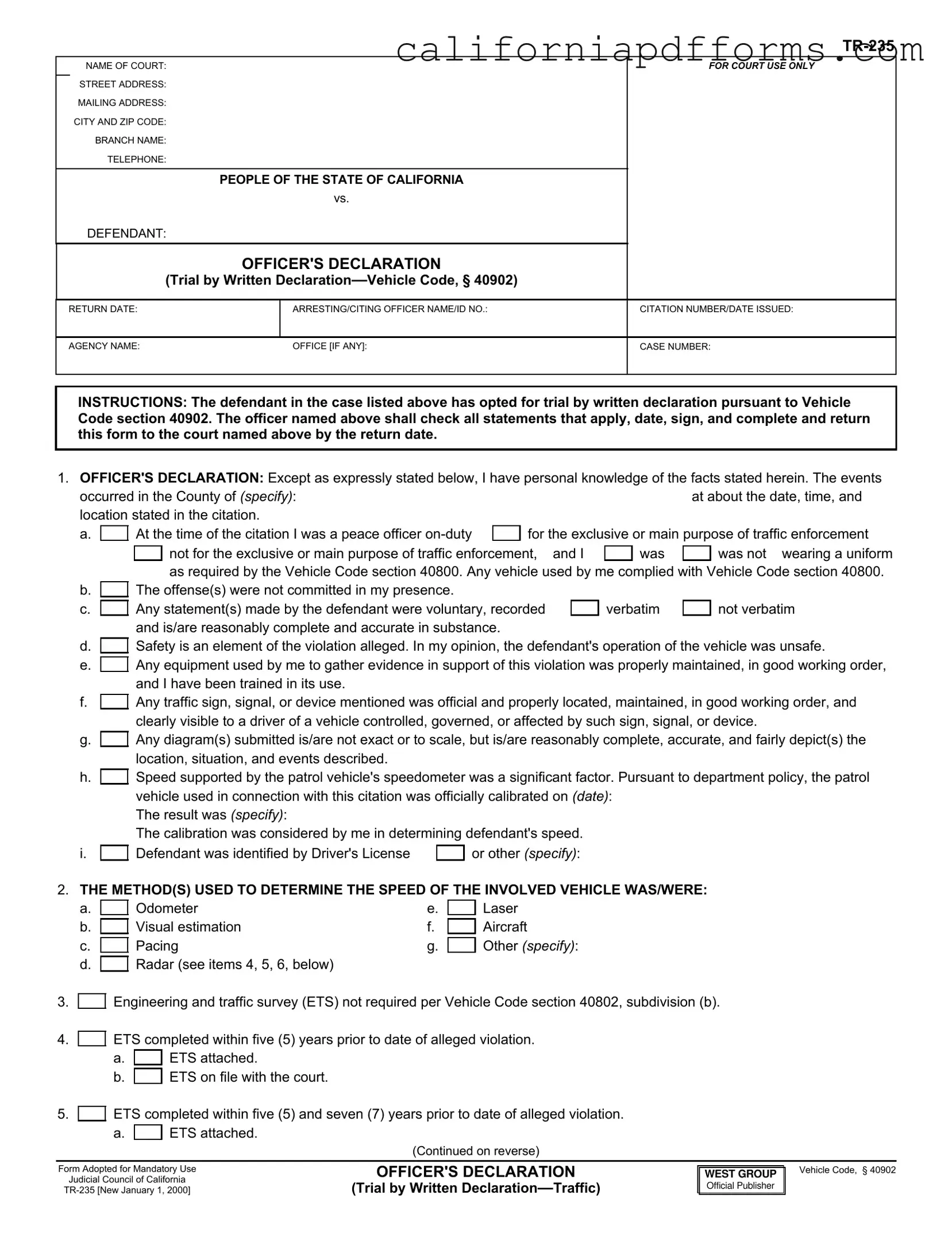Download Tr 235 California Form
The TR-235 California form is a legal document used in traffic cases, allowing defendants to opt for a trial by written declaration under Vehicle Code section 40902. This form requires the arresting or citing officer to provide a declaration regarding the circumstances of the citation. Timely completion and submission of this form are essential for the case to proceed effectively; fill out the form by clicking the button below.
Open Your Form Online
